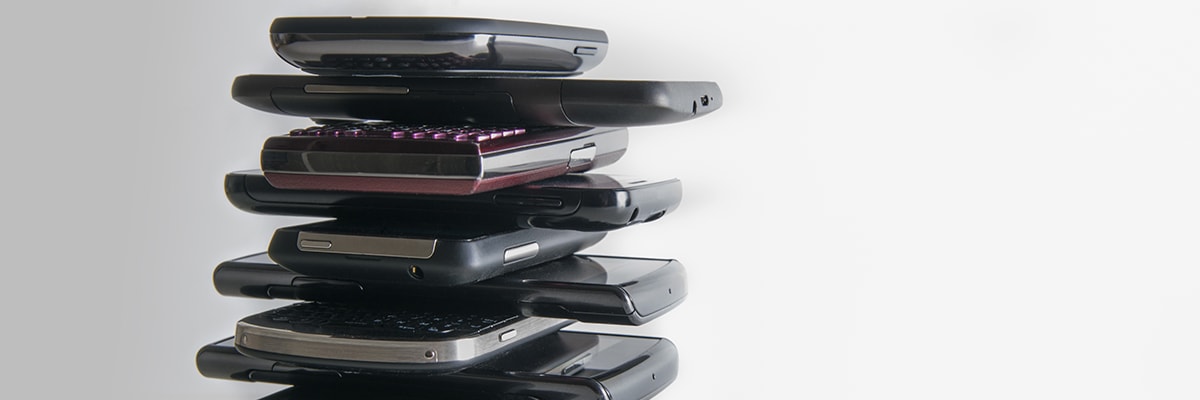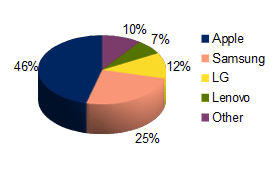
Return navigate_next
The Rise of Smartphones and Warranties
October 19, 2020 *
No account of smartphones and their history could be complete without recognizing what Nikola Tesla predicted in 1926. Perhaps America’s most remarkable inventor and futurist, he not only foresaw cell phones and smartphones, but may also have set the stage for thinkers, engineers, and inventors who came long after his death in 1943. Here are his now-famous words.
“When wireless is perfectly applied … we shall be able to communicate with one another instantly, irrespective of distance. Not only this, but through television and telephones, we shall see and hear one another as perfectly as though we were face to face, despite intervening distances of thousands of miles; and the instruments through which we shall be able to do this will be amazingly simple compared with our present telephone. A man will be able to carry one in his vest pocket.”
Despite his prescient vision, the road to devising a phone that wasn’t tethered to the wall with a curly cord saw many solid efforts that gradually led to the “vest pocket” smartphones we have today. Here’s a timeline that begins in the 1970s - nearly half a century ago.

Early Efforts
Recognition for creating the first cell phone goes to Motorola. In 1973, the company tested a prototype that would later become the Dyna TAC 8000X. Using the 900 MHz band, it took 10 hours to charge, weighed more than two pounds, had 30 circuit boards, and delivered just 30 minutes of talk time. It went on sale in 1984 at $3,995.
Later developments in the early 2000s saw entries from Nokia, Samsung, Sanyo, and others, but none of them offered the features we take for granted today. Personal digital assistants (PDAs), like those from Blackberry and the Apple Newton, put the idea of portable computing in play. IBM was the first to release a phone that combined PDA features with telephony in a single device. Named “Simon”, the company released it in 1994. It sold for $900, came with 11 apps, a fax modem, and an LCD screen.
IBM’s Simon only sold about 2,000 units. It took Steve Jobs to envision and create the first true smartphone for the masses. He announced the first iPhone in 2007 to a packed auditorium of Apple aficionados. It had a tiny 3.5-inch screen that by today’s standards would be laughable, but Jobs’ enthusiasm and Apple’s marketing prowess changed forever how we think of a telephone.
Today’s Leading Smartphone Manufacturers

As happens in most high-tech marketplaces, a few manufacturers rise to the top and share the bulk of sales. Today, in 2020, Counterpoint Research reports that Apple, Samsung, LG, and Lenovo lead the way and have captured 90% of the U.S. smartphone market.
With Apple earning nearly half (46%) of smartphone sales, the Android phone makers share the rest. Those sales are divided among Samsung, LG, and Lenovo, but also among a host of phone makers that are not as popular.
Not to leave anyone unprotected no matter what brand smartphone they have, Upsie sells smartphone extended warranties for a much broader line of phones than those shown in the graph. At present time Upsie supports customers who buy from any of the following smartphone manufacturers:
- Apple
- Samsung
- OnePlus
- Blackberry
- Motorola
- Asus
- Essential
- HTC
- Nokia
- Sony
- Revvlry
- Vernee
- LG
- Nextbit
- Microsoft
- Xaiomi
- ZTE
- Huawei
- Kyocera

A Brief Look at Smartphone Warranties
A warranty is a promise that the manufacturer will repair or replace your smartphone if it fails due to the fault of the manufacturer within a specified period. These are typically one-year programs and they rarely offer protection against the most common hazards people experience. For instance, surveys of more than 5,000 people show that about half experienced damage to their phones during the past 24 months. Fixing a cracked screen, with an average cost of $277 for iPhone and $145 for Android, was the most common problem. Phone makers’ warranties don’t cover this; if they did, the repairs would be free.
The Creation of Upsie Warranties
Enter Upsie with its extended warranty programs. They provide all the protection a manufacturer warranty does, but they also add accident protection. Upsie programs cover drops that crack the screen, immersion in water, broken connectors, and a whole range of other hazards shown here.
Even as the smartphone market began to grow through the 2000s, phone makers realized they needed to offer repair services. Apple and Samsung both chose to offer their own repair programs in which they charge customers a one-time fee followed by a deductible each time a repair is needed. Both fees vary based upon the initial cost of the phone. At the same time, carriers and big box stores began offering insurance on smartphones. However, many came out with several plans, each with different coverage, limits, and deductibles that many found confusing. Today, those companies are still selling an array of plans, and customers still find it hard to justify the cost versus the coverages offered.
Upsie entered the market with its more comprehensive plans in 2015 to accomplish two goals. First, the company wanted to simplify smartphone repair. Second, it wanted to cut the gigantic markups phone carriers and big-box retailers tack on to their programs.
Today, Upsie offers easy-to-understand contracts priced less than other plans. Upsie protects both new and used smartphones as long as the phones are in good working condition. Further, Upsie plans provide three pathways for repairs. They can be done at local certified facilities, including the Genius Bar for iPhones; or, broken phones can be sent to Upsie in a box Upsie supplies; or, Upsie can replace a phone if repairs are not practical.
Get ready to be pleasantly surprised. Check out Upsie’s extended warranty plans, or contact them directly at 1-877-844-7745.
Learn More About Smartphone Insurance:
* This article is over 6 months old and may or may not be updated.
